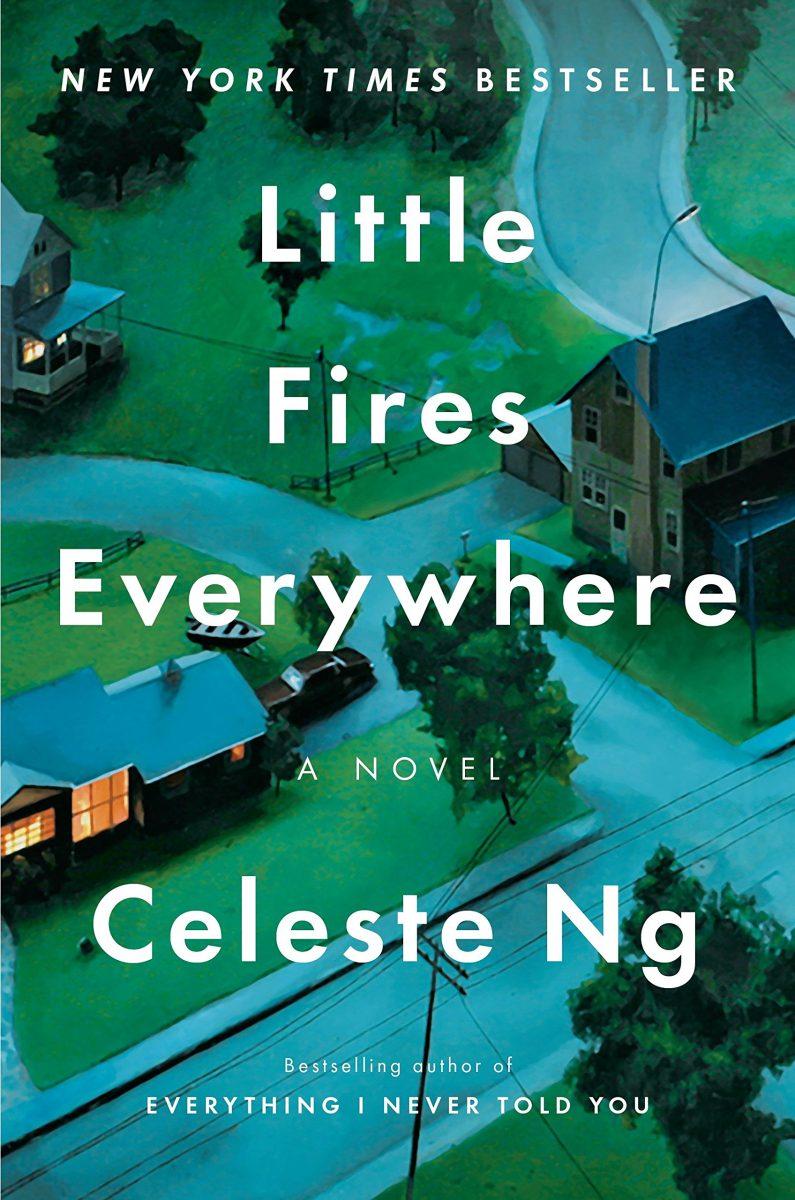Celeste Ng’s “Little Fires Everywhere” opens with its inevitable conclusion: a fire.
This isn’t a mystery novel. We immediately know the fire was intentional, the culprit is no surprise and, after reading the book, their motivation is unmistakable. But throughout the book, Ng weaves a surreal story that feels profound but unforced, with unassuming symbolism seeped into every detail.
The story revolves around Mia, an artist, and her daughter, Pearl, who settle down only long enough for Mia to finish a project, then move again. They move to the perfectly organized town of Shaker Heights, where everything is by design. Mia and Pearl fascinate the residents of Shaker Heights, including the Richardson family, the town’s model of perfection (from the outside, at least). Mr. and Mrs. Richardson have four children — Lexie, Trip, Moody and Izzy — and every member of the family develops unique relationships with Pearl and Mia.
Ng’s characters start as archetypes — the artist, the gypsy, the introvert, the charmer, the rule follower, the rebel — and expand into people that feel real and tangible. Instead of characters progressing linearly, their stories unfold slowly, sometimes separately and sometimes woven together.
These characters are designed as juxtapositions to each other. Artistic Mia makes precise Elena Richardson uncomfortable. Rebellious Izzy infuriates her mother, even though Elena fostered her daughter’s spirit. Shy Pearl ends up being the only person that popular Lexie can turn to. Each has a purpose and is symbolic without becoming a stereotype. Character development can make or break a book, and the growth of Ng’s characters is wonderfully organic.
If you enjoy books that wrap up the conclusion in a bow, I don’t recommend this one. The story gives a snapshot of the lives of its characters; there isn’t closure, and many of my questions were left unanswered. But Ng is comfortable with ambiguity, and even though there isn’t closure, the ending feels like a natural result of the events of the book.
Don’t expect a happy ending, either. As the book progressed, I became more and more hopeful that certain characters would evolve, grow more introspective or self-aware, and fix their mistakes. Even though I was disappointed when they didn’t, it made me enjoy the book more because it was so artfully done.
I’m always skeptical of fiction books because the relationships and characters within them too often fall into exhausted cliches, which means I’m ecstatic when I find a novel that doesn’t feel so manufactured.
Lauren Slusher is a business honors junior and opinion writer for The Battalion.
“Little Fires Everywhere” creates dynamic characters who feel surprisingly real
October 14, 2018
Photo by Creative Commons
Little Fires Everywhere
0
Donate to The Battalion
$1065
$5000
Contributed
Our Goal
Your donation will support the student journalists of Texas A&M University - College Station. Your contribution will allow us to purchase equipment and cover our annual website hosting costs, in addition to paying freelance staffers for their work, travel costs for coverage and more!









